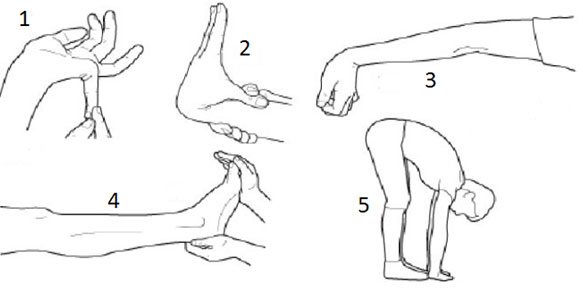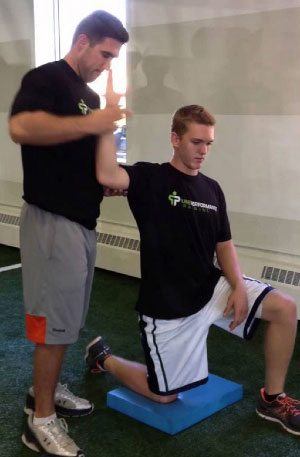Today’s article is a guest post from Sam Sturgis regarding the influence of joint laxity on program design. This is an important concept to understand when individualizing programs to achieve the best results. People can fall on both ends of the laxity spectrum, from super loose to super tight. Knowing this information will help you develop the best programs that are specific to the needs of each person. Thanks for contributing Sam!
How Does Laxity Influence Program Design?
A heavily debated topic in the strength and conditioning world involves stretching. It seems like there are never ending questions about stretching, such as “Who needs to stretch?,” “When is the best time to stretch?,” “Does stretching even work?,” and many more. Often times I will have clients mention to me that they “want to get more flexible” and that they “always feel tight”. While this may be true in some instances, other times this feeling of “tightness” can be protective muscular tension since other structures aren’t quite working properly.
Being too tight obviously isn’t good, but neither is being too loose. It’s important to strike a balance of joint mobility and stability.
In our bodies we have two types of stabilizers: static and dynamic. Static stabilizers are inert structures like bones, ligaments and joint capsules. These are non-contractile structures that do not create movements, they are simply there to create joint articulations and hold them together. Dynamic stabilizers are the muscles. By contracting during a joint movement, they actively hold our joints in position so that they can move freely. Laxity is a normal occurance. Each joint has a certain amount of laxity. However, in joints that have a lot of laxity, the static structures that hold the joints together may have a more difficult time keeping the joints in a neutral position. Therefore, the muscles must work harder to create dynamic stability.
This laxity can either be congenital, meaning that you were born with it, or secondary to injury or repetitive activities.
During your assessment, one way to determine how lax a client may be is to use the Beighton Laxity Scale. Mike Reinold and Eric Cressey mention this in their DVD Optimal Shoulder Performance and show how they use a Beighton Score when designing their programs.
The Beighton Score
The Beighton Scale is a 9 point scale that goes through a series of passive ranges of motion where a point is given for each indicator:

- Hyperextension of the 5th finger MCP joint beyond 90 degrees
- Apposition of the thumb to the flexor aspect of the arm
- Hyperextension of the elbow beyond 10 degrees
- Hyperextension of the knee beyond 10 degrees
- Toe touch with the knees straight, touch the palms flat on the floor
A score of 0-4 would indicate an individual who is within normal levels of joint stiffness whereas a score of 5-9 would indicate joint laxity. (photo from Physio-pedia.com)
Note From Mike: In Optimal Shoulder Performance, I teach how I actually use a 5-point scale. In my mind if one of your elbows can hyperextend, for example, than you get a point. If you perform a lot of unilateral activities, like throwing a baseball, you may have some chronic adaptations that may alter your score. If you non-throwing arm has the laxity, then your throwing one probably had it too!
How to Use a Beighton Score

Conversely, someone who scores a 0 on the Beighton scale may be a candidate for more soft tissue and mobility work because they may need to create more range of motion to move freely and safely.
There is a continuum that clinicians should assess for and use to rationalize their decision making. If a client presents with joint laxity outside of the normal limits, act appropriately and promote better proprioception and dynamic stability. Stretching or mobilizing someone who is already loose could make their issue worse. That protective tension is there for a reason, to keep the joint from getting injured! On the contrary, if someone presents as tight outside of normal limits, focusing on increasing their range of motion may be the most appropriate solution. If you can know which side of the fence each person falls on, this will help you individualize everyone’s program to maximize their training results.
About The Author





